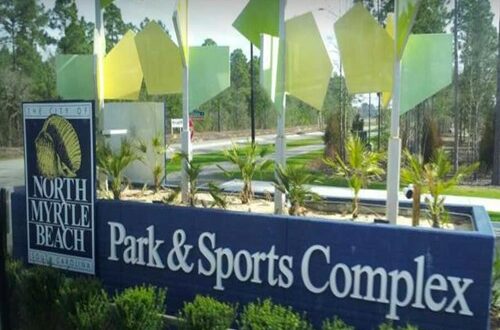The city is in the process of buying about 100 acres of land next to the North Myrtle Beach Park and Sports Complex to expand the athletic facilities as well as allow for an apartment complex requested by an adjacent owner.
Second and final reading of the two ordinances has not yet been scheduled.
The city is not ready to made public how many new fields or what type will be there, said Pat Dowling, city spokesperson. “Generally, though, the acreage would be used for more ball fields and soccer fields, the latter of which can also be used to accommodate other sports and events.’’
Last year, some parks and recreation department staff said that the fields are in such high demand, that expansion looked necessary. “From its inception, the city has used the Parks & Sports Complex to expand local youth and adult sports league opportunities, and that has worked very well,’’ Dowling said. “The additional fields will increase those opportunities. Other amenities could be introduced to the new acreage as well.’’
Dowling said the 96-acre acquisition from Sandridge LLC fits with the long-term goals for the city. “From a Sports Tourism perspective, the additional fields would enable the city to bring in more sports tourism events and it would also enable the city to accommodate large sports tourists’ events, expanding the direct economic impact to the North Myrtle Beach community.’’
As part of the proposal, Champions Boulevard would have added lanes from Robert Edge Boulevard to the entrance of a single-family residential area known as Park Pointe. This would alleviate the build-up in traffic caused by such things as the holiday drive-through light show at Christmas, Dowling said.
Also, developers DDC Engineers have asked the city to rezone about 145 acres of vacant land off Champions Boulevard and Long Bay Road from a lower-density housing subdivision to a higher-density apartment complex, but the owners have agreed to limit it to 750 units, Dowling said. Both it and the existing Park Pointe subdivision are zoned R-2, which allows for the development of single family homes and mid-rise residential though Park Pointe’s plan only calls for homes.
Dowling compared the idea of the apartment complexes to the thriving, mixed use communities in Market Common and Carolina Forest. “Market Common is a good example of how the real estate development market has shifted numerous times in the past decade in terms of residential product offerings.’’
In fact, the 2011 master plan, developed by the city and the adjacent land-holding company, Sandridge, envisioned the development of a shopping center and other commercial property. But soon after, Sandridge’s owners put 1,000 acres in a conservation easement. The city sued Sandridge alleging that the landowners were not providing the deed to the right-of-way to construct the road expansion, but that has been settled in favor of negotiating.
A couple of homeowners in Park Pointe expressed concerns at the council meeting about congestion, the impact on the sports complex. One resident asked that the original R-1 designation remain in place to preserve the look and integrity of their separate subdivision, which currently has 63 homes permitted out of a total of 168 homes planned.
But Dowling noted that the current arrangement decreases the amount of traffic that would have been added to Champions Boulevard had more commercial development taken place as originally conceived.
“Following the annexation of the overall Sandridge tract, much of the land that was to be developed was placed into permanent conservation easements, which means that the projected population and uses originally envisioned for the land are now far too small to support any significant commercial development.’’
This also changed the plans to expand Champions Boulevard further than the entrance to Park Pointe.
“On a larger scale, the original design for the total length of Champions Boulevard was engineered to handle much more traffic than will now actually occur. Now that the significant commercial development will not occur, the larger size road is no longer necessary or practical. The road will be scaled to accommodate the amount of traffic that it will carry into the future.’’
 North Myrtle Beach Times Serving our Community and the Grand Strand for over 50 years
North Myrtle Beach Times Serving our Community and the Grand Strand for over 50 years

